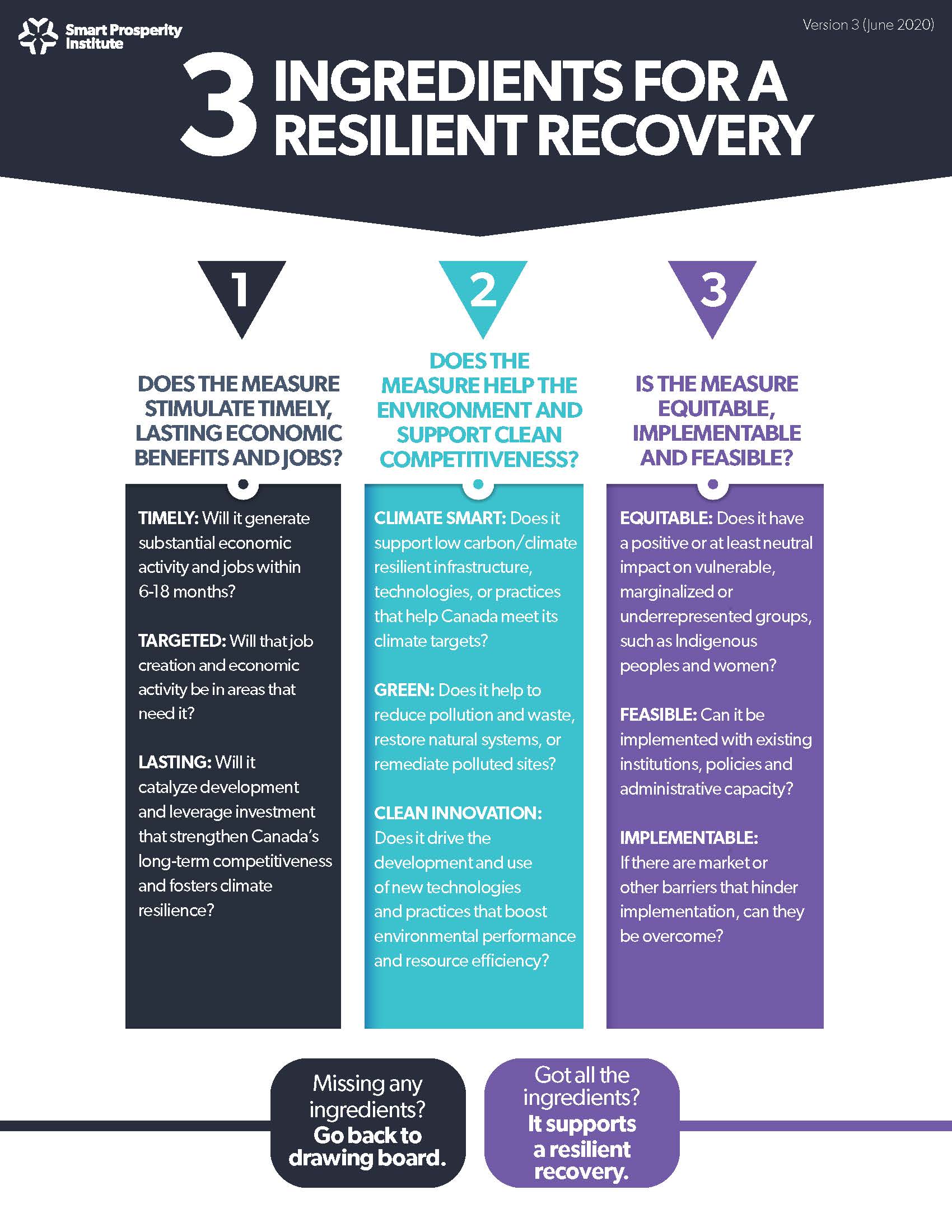
April 30, 2020
By Stewart Elgie and John McNally
This post is part of Smart Prosperity Institute’s Smart Stimulus Project. To see other posts from this project, click here.
Want to receive the latest analysis and insights on smart stimulus for a resilient economic recovery? Sign up for our monthly updates here.
As Canada starts to succeed in stemming the tide of the COVID pandemic, and social distancing is gradually relaxed, governments will turn their attention to the next big challenge: economic recovery. The COVID-driven recession has brought double-digit unemployment and a plummeting GDP. In response, governments will soon make a once-in-a-generation investment to help reboot Canada’s beleaguered economy. That economic stimulus package must not only boost jobs and growth right away, it should also build a better future for Canada.
It is not easy to do both. In the urgency to spur immediate economic activity, governments often fall prey to short-term thinking, and give short shrift to ensuring stimulus projects also create long-term economic, environmental and social benefits. (For more on this, see Stewart Elgie’s recent article in Macleans on Three Lessons for Stimulating a Smart Economic Recovery.) Moreover, the traditional tools used to assess stimulus projects often do not measure the full range of economic and environmental benefits, both short term and long term.
To help address this problem, in the 2008-9 economic downturn, Smart Prosperity produced a green stimulus framework for assessing proposed recovery measures to ensure they provide the greatest economic and environmental benefits for Canada.
Times have changed. The focus now is not just on growing greener, but growing smarter and cleaner: to strengthen Canada’s competitiveness in a global economy that is becoming more innovative, low carbon and resource efficient (as Canada’s Economic Strategy Table advised). A new lens is needed. One that can assess stimulus measures not just by their economic and environmental impacts, but by whether they spur innovation and build a cleaner, more competitive economy. In short, do they put people to work today building the economy of tomorrow?
To that end, our new Smart Stimulus Framework asks three questions.
First, does the measure stimulate the economy now and offer lasting benefits? Spurring jobs and growth right away is the top priority for economic stimulus. But the best investments are ones that also help build a more competitive, resilient economy for the long run, attract private investment, and grow the next generation of good jobs. We want to look back in 5-10 years, as we are paying off this massive deficit, and feel good about these investments -- that they laid the foundation for a better future for Canada.
Second, does the measure help the environment, and support clean competitiveness? Will it help Canada to do its part in the global effort to tackle climate change, perhaps the most critical long-run economic and environmental challenge of our time? Will the measure reduce pollution, cut waste, or conserve and restore nature – all of which are vital to Canadians’ health and well-being. And will it accelerate clean innovation: putting people to work making smarter, cleaner buildings, vehicles, energy systems and industries, to strengthen Canada’s economic and environmental competitiveness?
Third, is the measure equitable and feasible? Smart stimulus efforts should generate economic benefits for all Canadians, particularly vulnerable or marginalized groups, and they should not exacerbate inequality -- and ideally reduce it. They also should be simple and quick to implement. The best measures can be delivered using existing public institutions and capacity –we don’t have time to create new ones. We also should anticipate any constraints or impediments (such as skills training, regulatory approvals, or scale-up challenges), and if so they can be overcome quickly.
Prioritizing projects that offer a win-win-win is smart. Not every stimulus measure in a comprehensive package needs to meet all the criteria outlined below (e.g. some will address different objectives, such as building the health system). However, it is important that any projects with significant implications for the environment or clean growth score well on these metrics. Doing so is likely to be the difference between Canada maintaining climate progress and supporting a stronger economic future, and the nation stalling out or moving backwards.
We are about to make a once-in-a-generation investment in rebuilding Canada’s economy. Using this tool, we can help make sure those stimulus dollars are used to make smart investments in Canada’s present and future.

*Version updated on June 26, 2020